Jeep Wrangler: Automatic or Manual – Which is Right for You?
Choosing between a manual and automatic Jeep Wrangler often boils down to a mix of personal preference and the kind of functionality you expect from your vehicle. I’ve been driving Wranglers for the past 29 years, and this one decision between buying a stick shift or automatic will directly impact your driving experience, maintenance costs, and capability for off-road adventures.
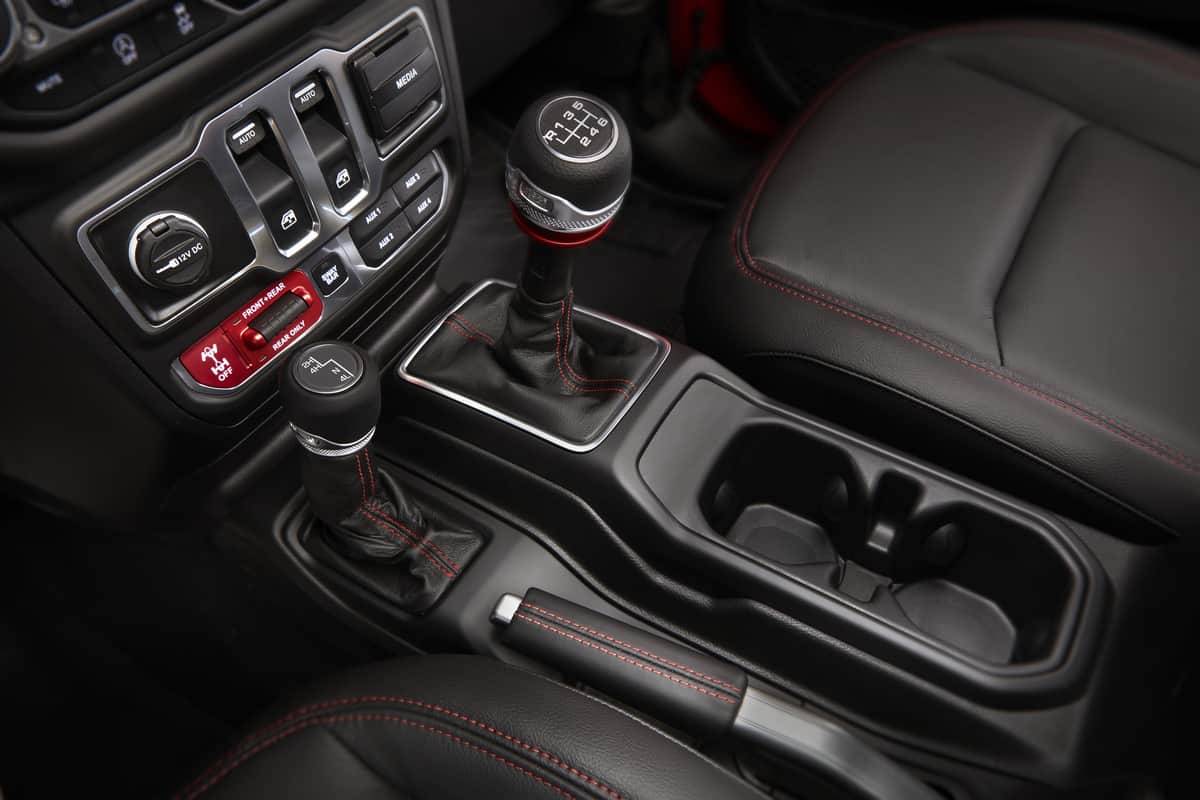
While automatic transmissions generally offer convenience and ease of use, manual transmissions may afford a greater sense of control and engagement for those who enjoy a more hands-on approach to driving.
Through years of automotive journalism and personal experience with various Jeep models, I’ve witnessed firsthand how the type of transmission in a Wrangler can influence performance, especially when tackling challenging terrains. It’s not just about the gear shifting experience, but also about how the vehicle handles inclines, rocks, and rough tracks, which can differ notably between a manual and an automatic.
Additionally, when considering resale value and long-term costs, each type of transmission brings its own economic considerations, from fuel efficiency to repair expenses.
Key Takeaways
- Both manual and automatic transmissions have distinct impacts on driving experience and off-road performance.
- Your choice can affect long-term economic factors, including fuel efficiency and maintenance costs.
- Personal driving preferences play a significant role in determining the ideal transmission for your Wrangler.
Jeep Wrangler Basics
When considering a Jeep Wrangler, it’s essential to appreciate its heritage, design, and the current options available.
As an automotive journalist, I’ve always been fascinated by the Wrangler’s evolution and its appeal to both off-road enthusiasts and casual drivers.
History of the Jeep Wrangler
The Jeep Wrangler has its origins in the rugged military vehicles of World War II. Its civilian journey began with the CJ models, but it was in 1986 when the first Wrangler, the YJ, officially hit the road.
Over the years, it adapted to changing demands while maintaining its iconic ruggedness.
Design Philosophy
Jeep has consistently upheld a design philosophy that blends practicality with adventure. The Wrangler’s body-on-frame construction, solid axles, and removable doors reflect a commitment to off-road capability and modular customization that I find particularly impressive.
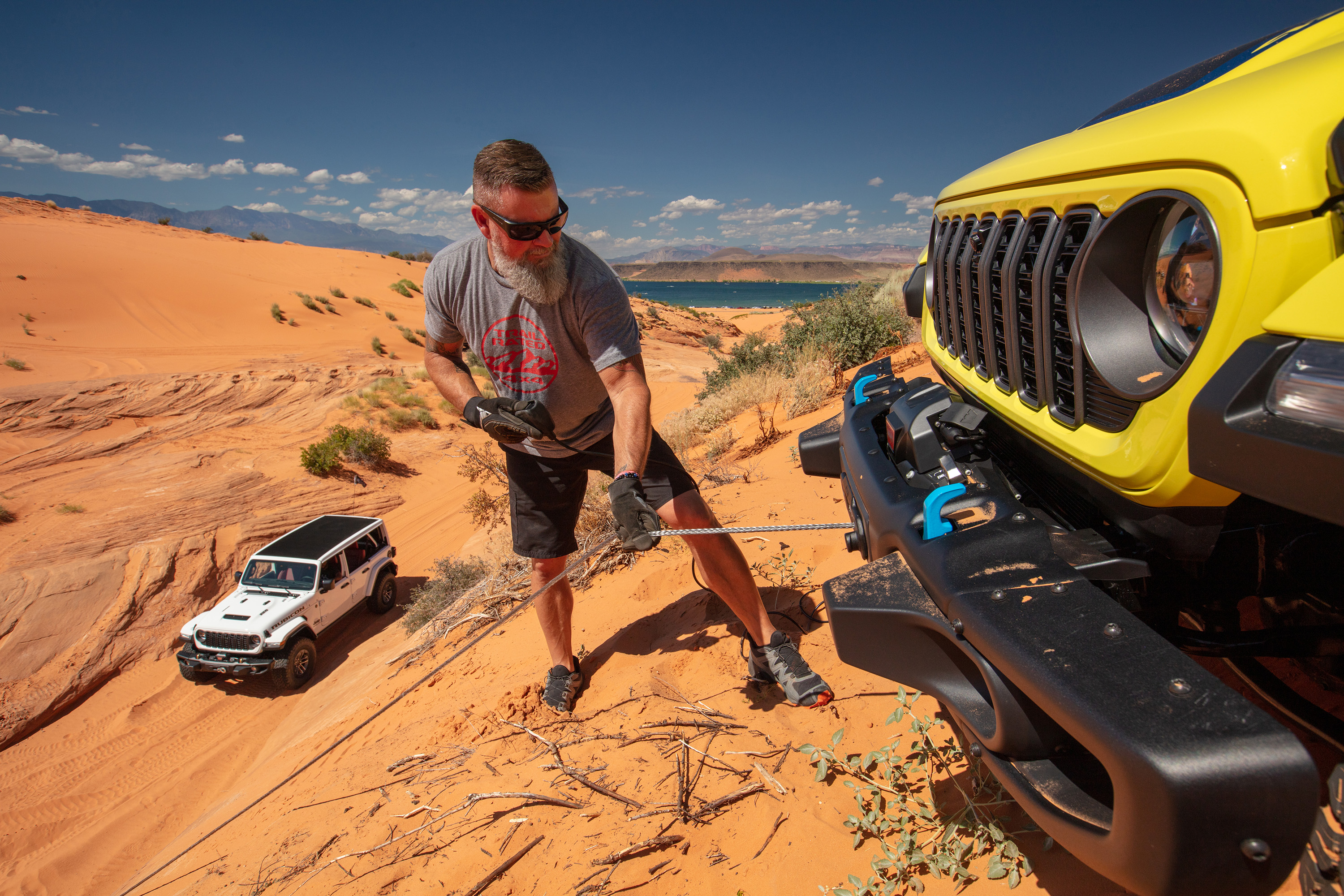
Current Generations
Generation-wise, we’re currently enjoying the JL model, introduced in 2018. This latest iteration continues the legacy with advanced features and refinements while leveraging technology to enhance the driving experience.
When I test-drove the JL, the improvements over the previous JK model, especially in terms of ride comfort and interior quality, were immediately noticeable.
Transmission Overview
When deciding between a Jeep Wrangler’s transmission types, I consider the driving conditions and personal preferences. Both the automatic and manual transmissions have distinct characteristics that can significantly influence the driving experience.
Automatic Transmission
Pros:
- Ease of use: The automatic transmission in a Jeep Wrangler offers a more relaxed driving experience, especially in stop-and-go traffic where constant clutch use can be tiring.
- Advanced technology: Modern automatics can provide impressive fuel efficiency, which might come as a surprise considering the conventional jeep wrangler notion of manual supremacy.
For more details, visit Automatic vs. Manual Transmission Jeep Wranglers – ExtremeTerrain.
Manual Transmission
Pros:
- Control: I appreciate the level of control provided by a manual transmission, especially when off-roading where precise power application can be critical.
- Durability and Maintenance: The simpler construction of manual transmissions can often lead to increased durability and potentially lower maintenance costs over time.
Learn more at Jeep Wrangler Manual vs Automatic: Pros and Cons.
Performance Factors
When examining a Jeep Wrangler, I find it crucial to consider how the vehicle will perform with its given transmission type. The overall performance can hinge on engine compatibility, the gear shifting experience, and how well it adapts to various terrains.
Engine Compatibility
In my experience, engine compatibility with the transmission plays a pivotal role in the performance of a Jeep Wrangler.
Automatic transmissions in Jeeps often pair well with engines designed for consistent torque delivery, enhancing drivability and fuel efficiency.
On the flip side, manuals might provide a more engaging experience but can require more skill to manage the engine’s power.
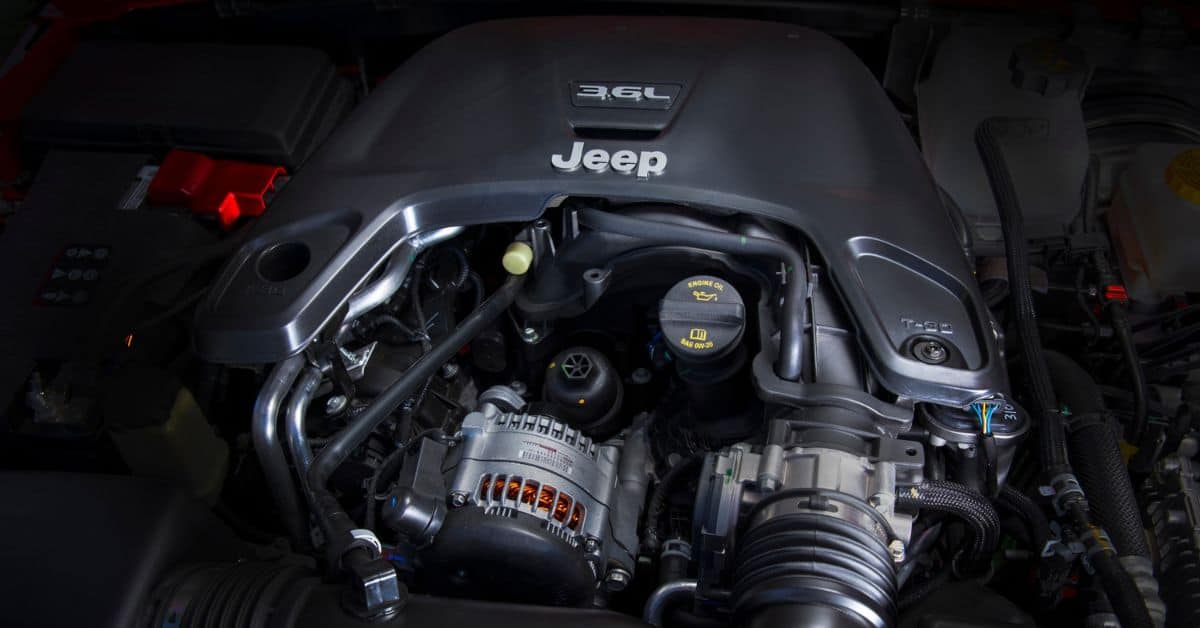
Gear Shifting Experience
Gear shifting experience greatly affects the enjoyment and control you have while driving.
With a manual Jeep Wrangler, shifting gears manually allows me a sense of connection to the vehicle and the road.
However, modern automatic transmissions perform gear changes faster than I could manually, which can result in superior acceleration and efficiency, as highlighted in a discussion on the Jeep Wrangler Forum.
Terrain Adaptability
Finally, let’s talk about terrain adaptability.
A manual Wrangler gives me the control to select the appropriate gear for off-roading conditions, potentially offering better traction control.
Whereas, an automatic Jeep Wrangler simplifies driving in changing terrains, as advanced gearboxes are designed to select the optimal gear without driver input, providing a smoother ride and reducing the risk of stalling.
Practical Considerations
When choosing between a manual or automatic Jeep Wrangler, there are practical aspects you’ll need to consider.
How you plan to use your Jeep—whether for daily driving, long trips, or rugged off-road adventures—will influence your decision.
Maintenance, technology features, and the likelihood of facing automatic transmission shifting problems should also play a part in your choice.
Daily Commuting
For daily commutes, I tend to recommend an automatic Jeep Wrangler. The convenience of not having to constantly shift gears in stop-and-go traffic can make a significant difference in driving comfort.
Despite this, be mindful of the common shifting issues that some automatic transmissions might experience, such as delayed gear changes which could affect your daily drive.
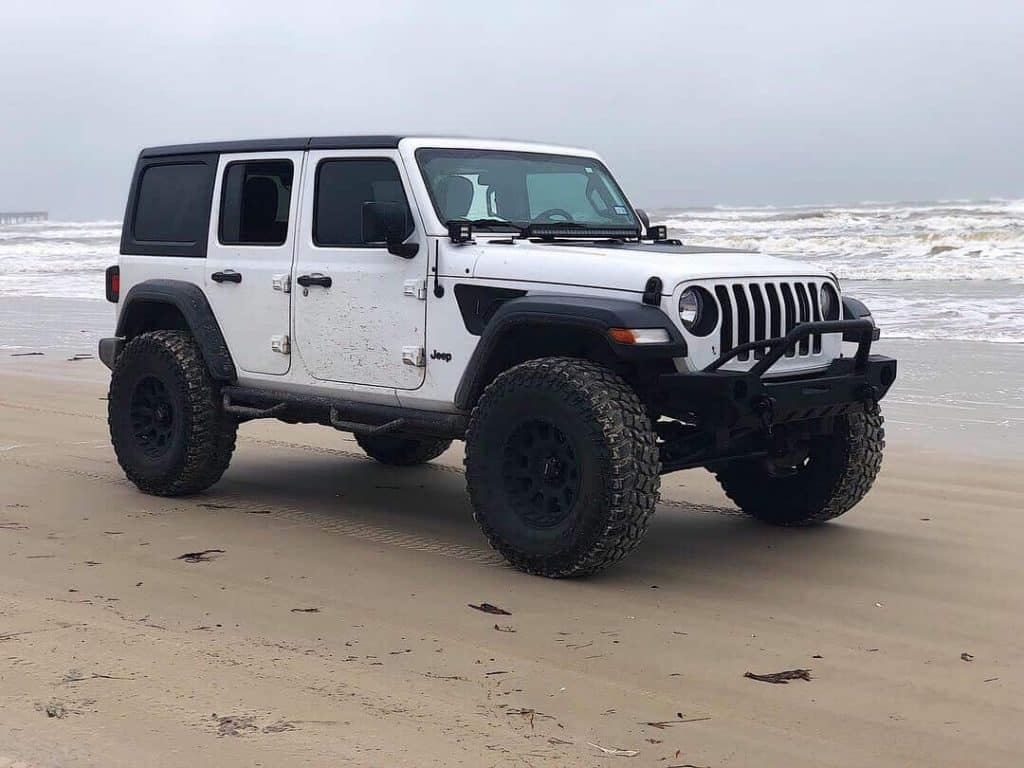
Long-Distance Travel
Now, if you’re hitting the highway for some long-distance travel, an automatic Wrangler again offers more ease, particularly when driving for hours.
Yet, a manual transmission could be more engaging if you enjoy the hands-on aspect of driving. I’ve always found that a manual keeps me more involved, which can be a real boon on those long, sometimes monotonous stretches.
Maintenance and Upkeep
Speaking of maintenance, the manual transmission in my Wrangler has been largely fuss-free and generally cheaper to repair when issues do arise.
Automatic transmissions, while convenient, can be more complex and costly to fix if you encounter problems.
Stay vigilant for symptoms of transmission troubles to avoid being hit with unexpected repair bills.
Technology Features
Lastly, let’s talk technology.
Newer automatic Wranglers come equipped with advanced features like hill start assist or descent control, which can be godsends on steep inclines.
I’ve been grateful for these kinds of aids during off-road excursions, as they take some of the stress out of tricky maneuvers.
With a manual, you’ll manage these situations with skillful clutch control, which might be appealing if you prefer a hands-on approach.
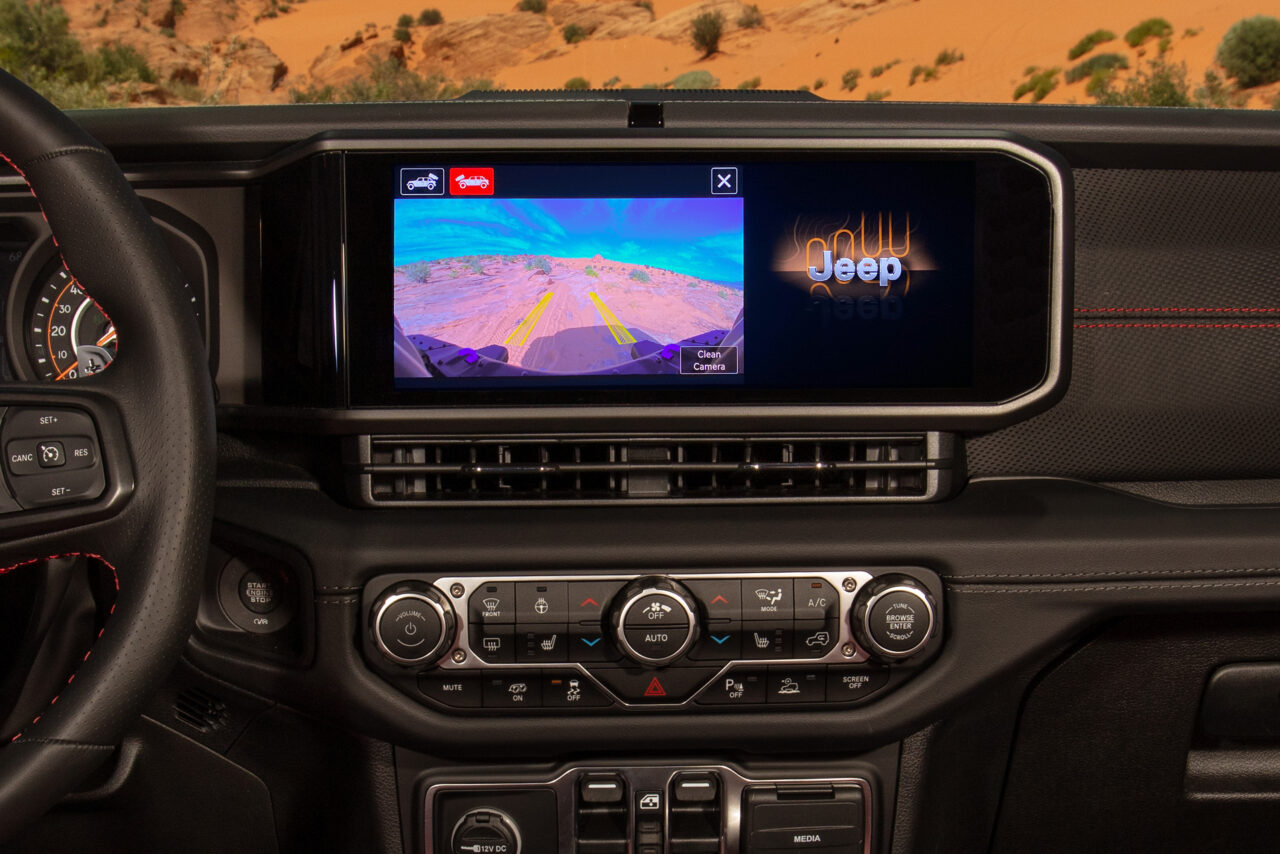
Off-Roading Dynamics
When I take my Jeep Wrangler on off-road adventures, I pay close attention to how different transmissions handle the terrain.
Let’s explore how both manual and automatic Wranglers measure up in various aspects of off-roading.
Trail Performance
In terms of trail performance, automatic Wranglers are known for their ease of use which is especially handy on complex trails. You can focus more on navigating obstacles rather than shifting gears.
On the other hand, a manual Wrangler gives me a sense of control and engagement that can be quite satisfying, especially when I’m tackling more predictable trails.
Climbing Abilities
Speaking of climbing abilities, I’ve found that automatic transmissions can deliver power more smoothly during ascents. This minimizes the risk of stalling on steep inclines.
A manual transmission, however, allows me to decide exactly when to shift for optimal power distribution, which can be beneficial if I need a burst of power to overcome a tough spot.
All-Weather Capability
All-Weather Capability is another crucial aspect.
The automatic Wrangler tends to provide a consistent performance in various weather conditions, adapting to changes without much input from me.
Driving a manual in changing weather requires a bit more skill, especially on slick or muddy surfaces where precise throttle control is key.
Customization Options
Lastly, Customization Options for both transmissions are abundant.
I personally like to tweak my Jeep for better off-road performance.
With an automatic, I might add a cooler to manage transmission heat during intense drives. In a manual, aftermarket clutch upgrades can enhance the off-roading experience, so it’s durable enough to handle the extra demands of harsh driving conditions.

Economic Factors
When considering a Jeep Wrangler, whether it’s manual or automatic, economic factors play a critical role. I’ve seen the decision swayed by considerations like fuel efficiency and total cost of ownership which includes both initial costs and potential resale value.
Fuel Economy
In my experience, fuel economy can vary between manual and automatic transmissions.
Often, manual Jeep Wranglers have been known to offer slightly better fuel economy. However, recent advancements in automatic transmissions with more gears have narrowed this gap.
For instance, the auto gear shifting is optimized to keep the engine running efficiently, possibly leading to comparable or sometimes even superior fuel economy in some automatic models.
Initial Costs
When we talk about initial costs, manual Jeep Wranglers generally come with a lower sticker price than their automatic counterparts.
It’s crucial to remember that the initial savings seen with manual transmissions can help if you’re on a tight budget.
For example, the Sport and Sport S trim levels, which traditionally come in manual, are usually more affordable than the off-road primed Rubicon with its more advanced automatic transmission, as explained on Offroad Genius.
Resale Market Trends
Now, let’s talk about the resale market trends. Automatic Jeep Wranglers tend to hold their value better in the used car market, which is something I always tell my friends to consider.
This is probably due to the broader appeal of automatics to a wide range of drivers. The ease of driving an automatic, especially in traffic-congested areas, makes them a favorite.
So, if you plan to sell your Wrangler down the line, the automatic could fetch you a better price. Jeep Wrangler specifications have evolved over time, and so has their resale value, pointing towards a preference for automatics in the resale market as detailed on ExtremeTerrain.
Personal Preferences
When it comes to choosing between a manual or automatic Jeep Wrangler, personal preferences play a crucial role.
For some drivers, the feeling of shifting gears is part of the joy of driving, while others prioritize convenience and ease, especially in heavy traffic.
My Preference
The feeling from long-time Jeep guys was “Wranglers only come in two door” and “Wranglers should only be stick shift”. With the popularity of the JK and now JL models, that line of thinking has slowly eased as these models introduced the Wrangler to a whole new market of buyers.
I am a diehard manual transmission guy. I absolutely love driving the older Jeeps in a manual. In YJ, TJ, or LJ Wranglers, the stick shift models give you a feeling of being truly connected with your Jeep.
Once the 4 doors were introduced in the JKs and JLs, I have not enjoyed driving the larger Jeeps in a manual, and I especially do not get the “connected” feeling when driving the manual transmission in the JLU. It feels quite numb to me.
This being said, I have spent the last 30 years driving YJs and LJs, and I still have one of each in my driveway. To me, there is just something special about the driving experience with their transmissions.
Here’s What I Would Buy
I would only buy the manual transmission in a two-door. I know I will get some hate for this in the comments below, but I just don’t enjoy the feeling of driving the manual transmission in the JL or JLU.
I do not think there is enough helpful feedback from the JL manual, and also, the four door are so large and they have much less visibility than the older Jeeps. It makes driving a manual much more difficult. This is especially true offroad where you may not be able to see obstacles as well as you can in a two door Jeep.
I have to admit, as a diehard manual transmission guy, it was extremely hard for me to admit this in writing… but it’s an Automatic JL or JLU that get’s my money.
**Do you drive a manual JK or JL model Jeep?
If so, tell me your thoughts in the comments below.
Manual Mastery
I’ve always found that a manual transmission in a Jeep Wrangler offers a unique sense of control. There’s something satisfying about shifting gears and feeling the raw mechanical connection between me and the vehicle.
Drivers who enjoy this tactile experience often prefer manuals for the level of mastery it provides.
Ease of Use
On the flip side, an automatic transmission is often easier to use, especially for daily commuting. I appreciate not having to constantly engage the clutch in stop-and-go traffic.
For those who want hassle-free driving or have less experience with manual transmissions, an automatic Jeep Wrangler is typically the more convenient choice.
Driver Engagement
Driving a Jeep Wrangler with a manual transmission requires more engagement from the driver.
I feel more connected to the driving experience and more aware of the vehicle’s performance. This heightened sense of engagement can enhance the enjoyment of off-roading adventures or spirited driving on winding roads.
Learning Curve
Lastly, it’s important to note the learning curve associated with manual transmissions.
I remember the sense of accomplishment when I first mastered the clutch and gear shifts. Beginners may find it daunting, but with practice, driving a manual can become second nature and even add to the overall driving pleasure.
Frequently Asked Questions
When considering a Jeep Wrangler, the choice of transmission can significantly impact your driving experience. Let me share some insights based on my numerous test drives and long-term reviews of these iconic vehicles.
What are the pros and cons of choosing a manual transmission over an automatic for a Jeep Wrangler?
I find that a manual transmission in a Jeep Wrangler offers a more engaging driving experience since you have direct control over gear shifts.
The downside, as I’ve noticed, is that it can be less convenient in heavy traffic. Cost-wise, manual versions can be less expensive upfront, though the choice between manual and automatic can depend on personal preference and driving style.
How does the reliability compare between Jeep Wrangler automatic and manual transmissions?
In my experience, both manual and automatic Jeep Wranglers are robust machines.
However, modern automatic transmissions, with their advanced technology, have become highly reliable and sometimes offer better efficiency. Still, simplicity in the manual transmission could mean easier troubleshooting if issues arise.
Can driving enjoyment in a Jeep Wrangler be affected by the type of transmission?
Absolutely! For me, nothing beats the joy of operating a manual Wrangler on an open road; it’s more interactive and fun.
But for those who prefer simplicity and focus on the adventure, an automatic Wrangler can reduce the hassle of gear shifting and let you enjoy the scenery.
What are the maintenance differences between a manual and an automatic Jeep Wrangler?
I’ve maintained that a manual Jeep Wrangler often has lower maintenance costs due to its less complex design.
On the other hand, an automatic transmission can require more sophisticated repair work if something goes awry, potentially leading to higher costs over the vehicle’s lifespan.
How does off-roading performance differ in a Jeep Wrangler with a manual versus an automatic transmission?
Based on my off-roading adventures, an automatic Jeep Wrangler can provide a smoother and stress-free ride over challenging terrain.
A manual might offer more control, which some drivers prefer, but it demands more attention and skill, especially when navigating complex obstacles.
In terms of resale value, do manual or automatic Jeep Wranglers fare better?
From what I’ve seen in the market, automatic Jeep Wranglers tend to hold their value slightly better over time. This is because of their popularity and ease of use. But a well-maintained manual can still command a good price.
This is particularly true among enthusiasts who appreciate the classic driving experience.
